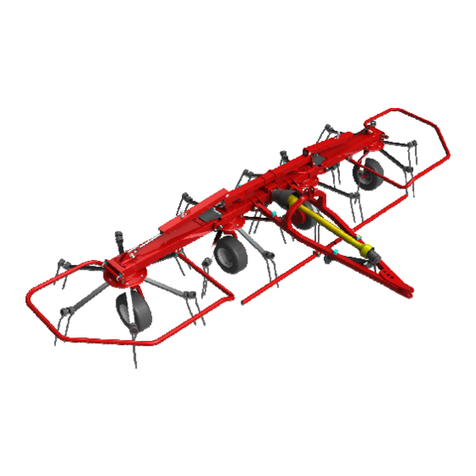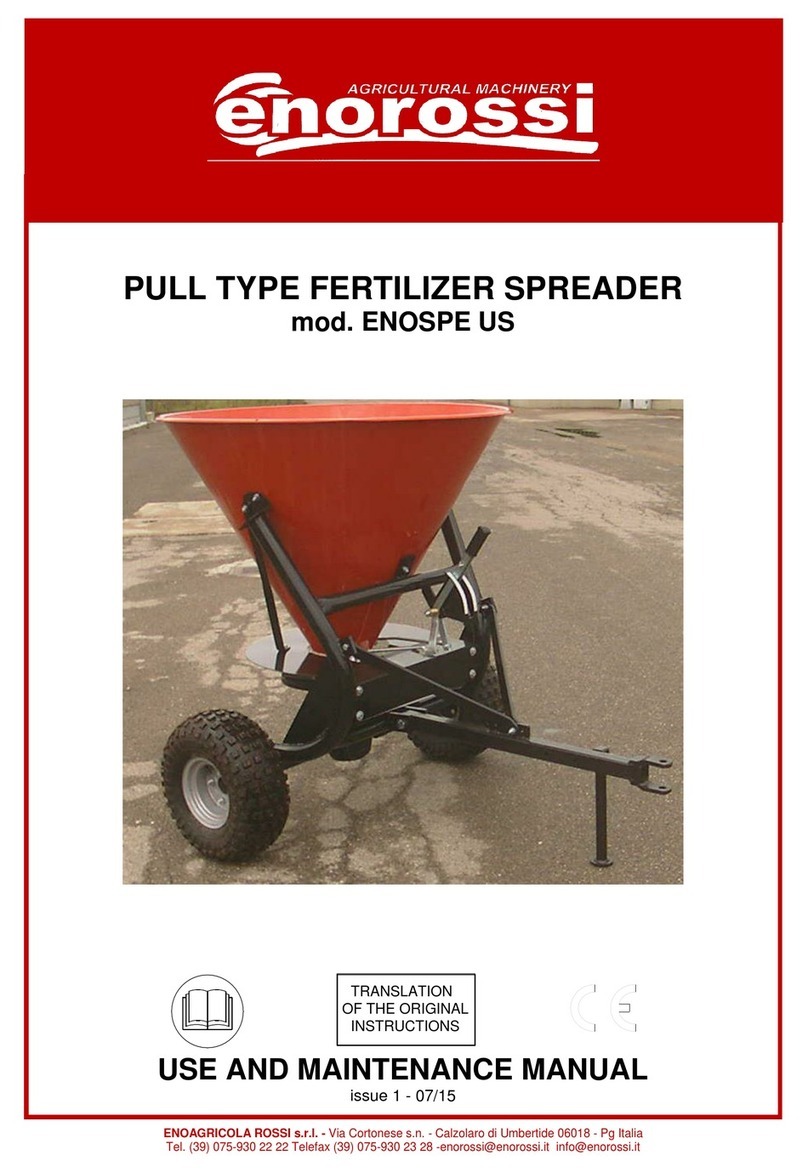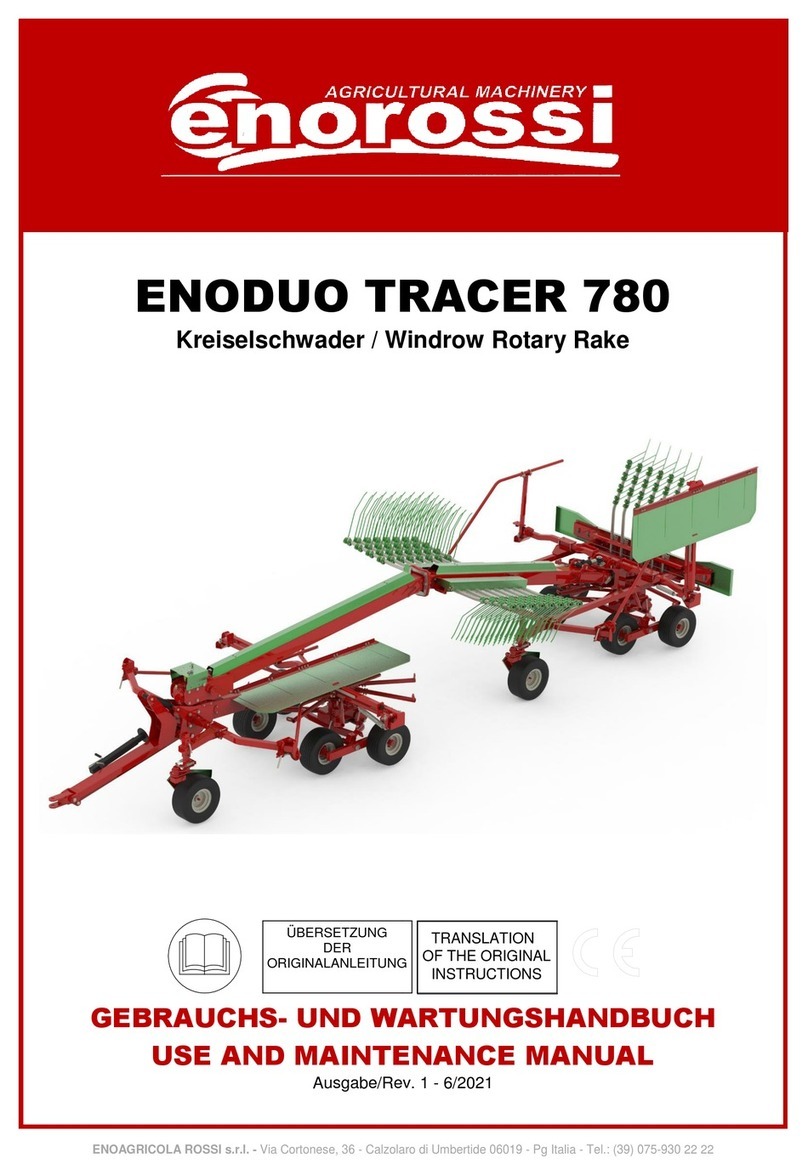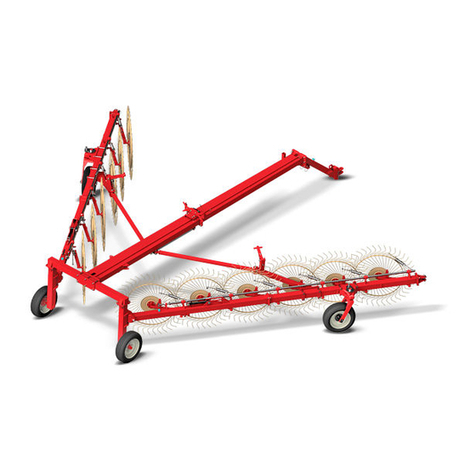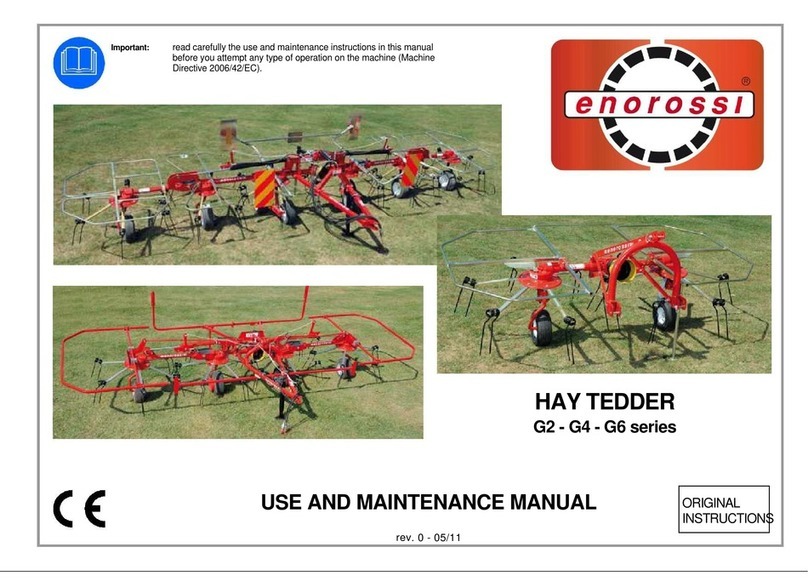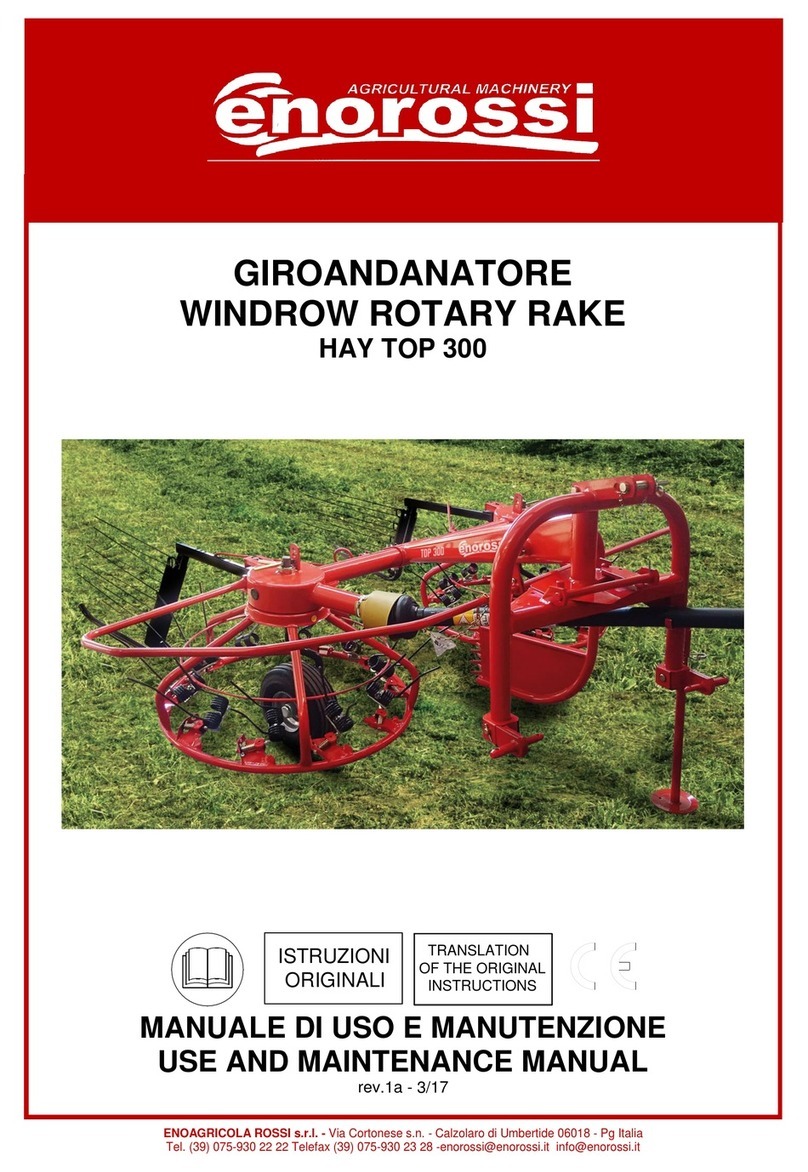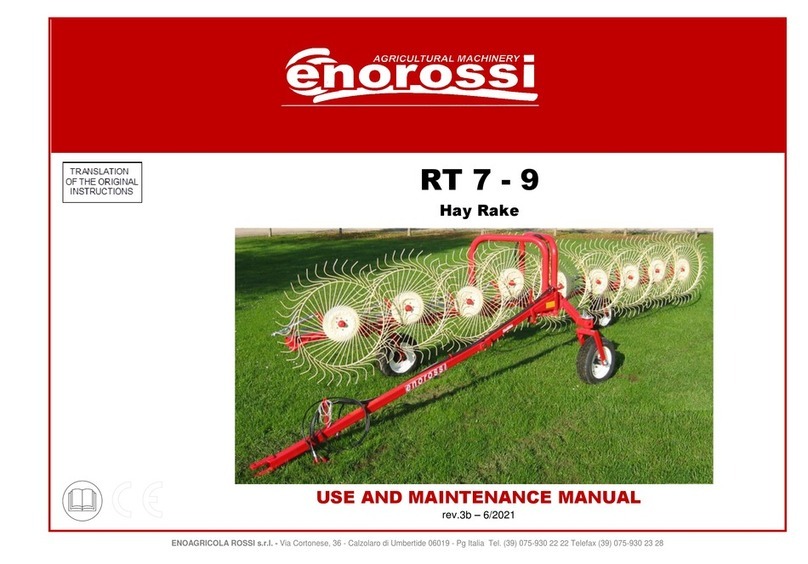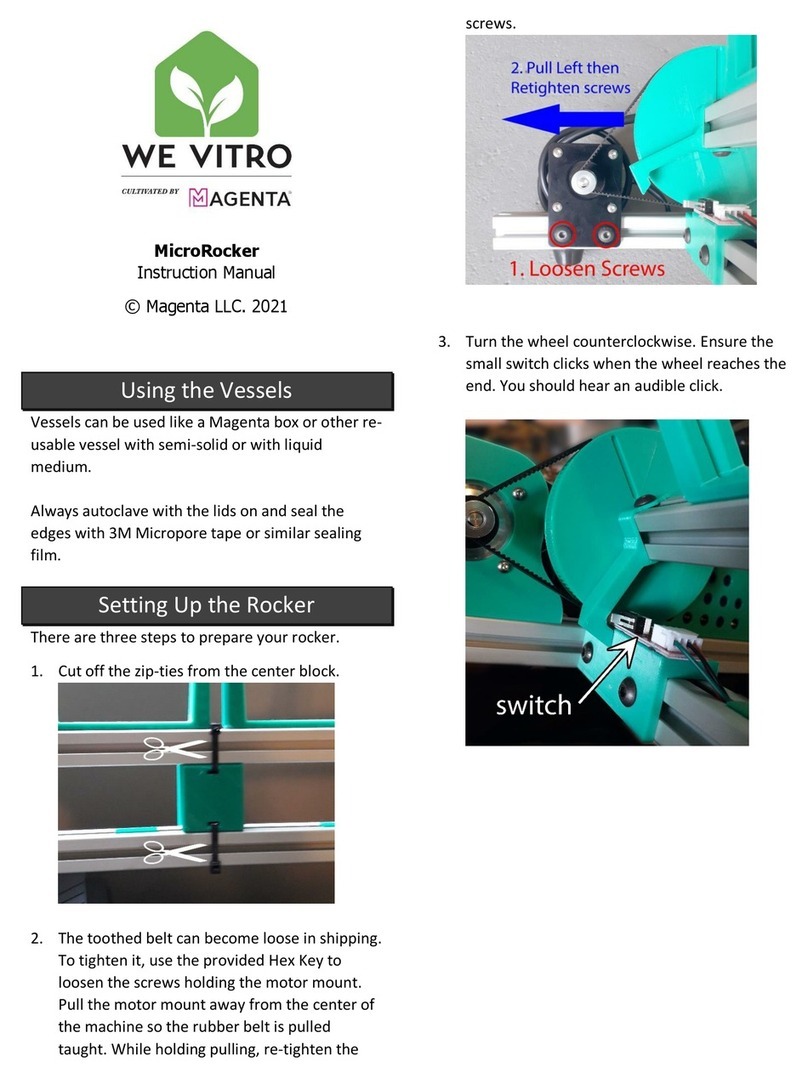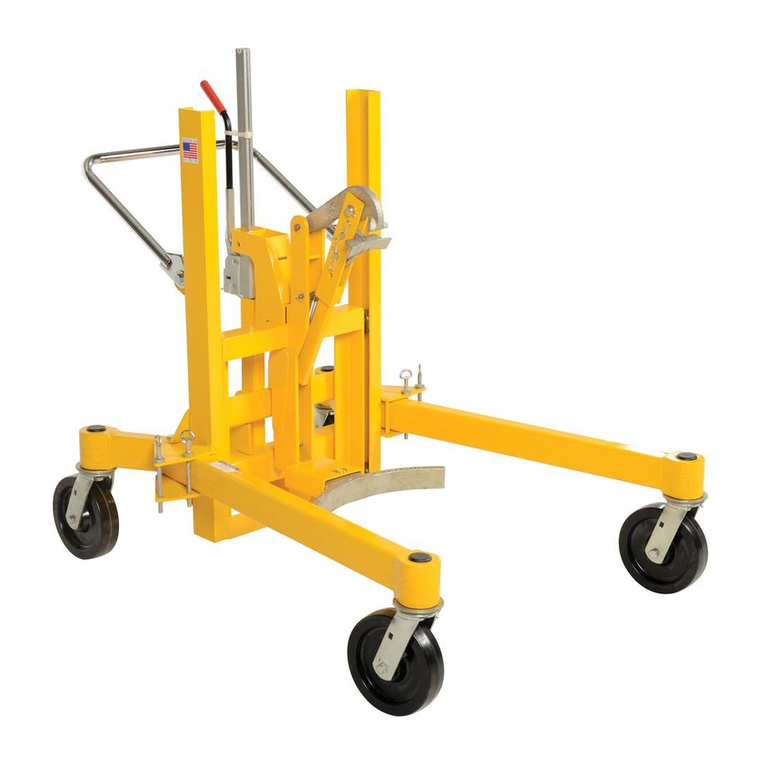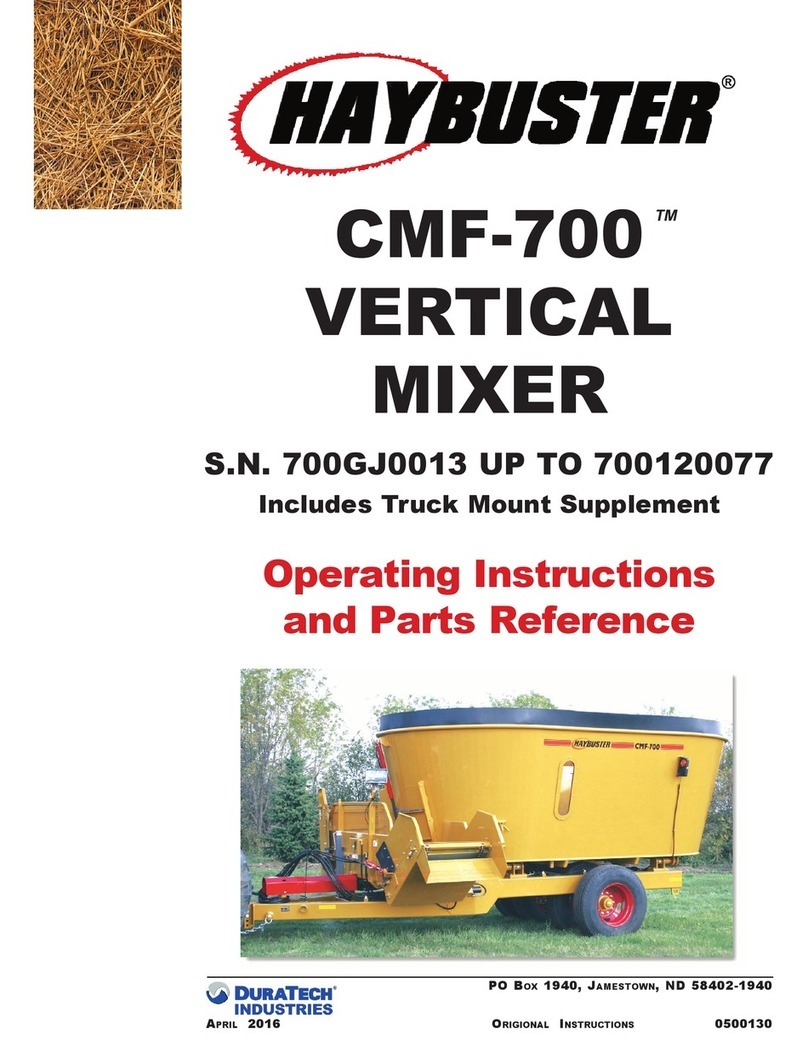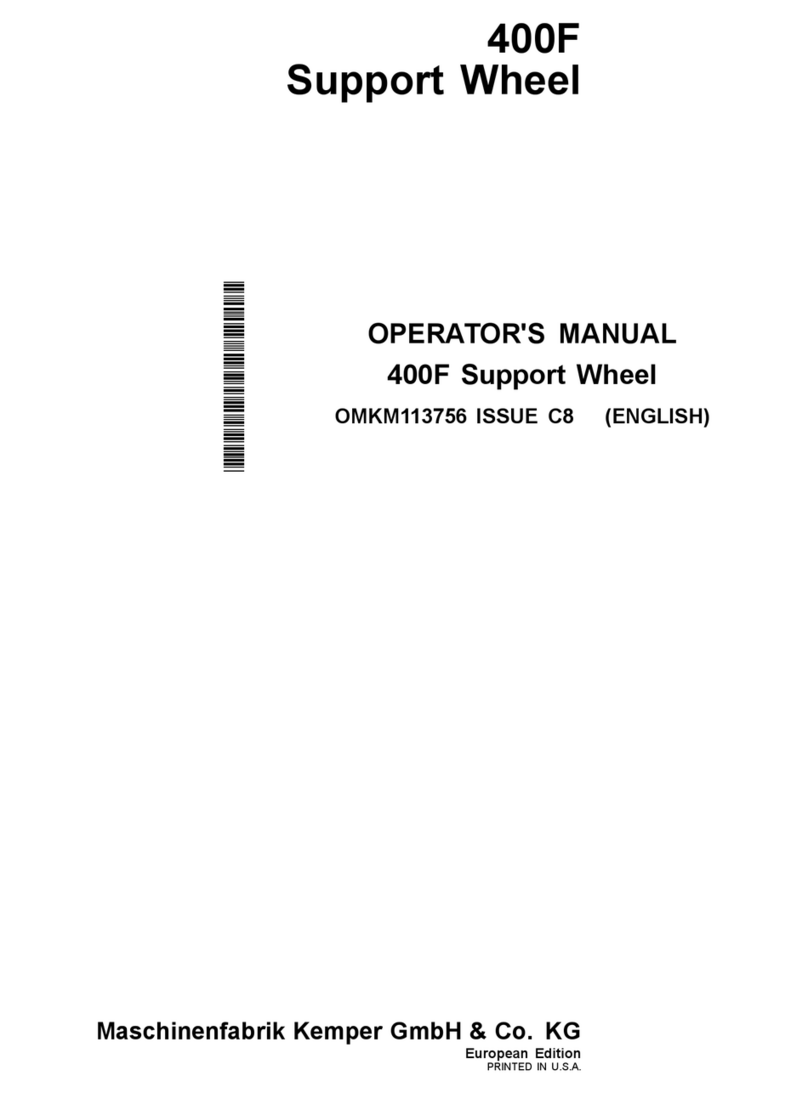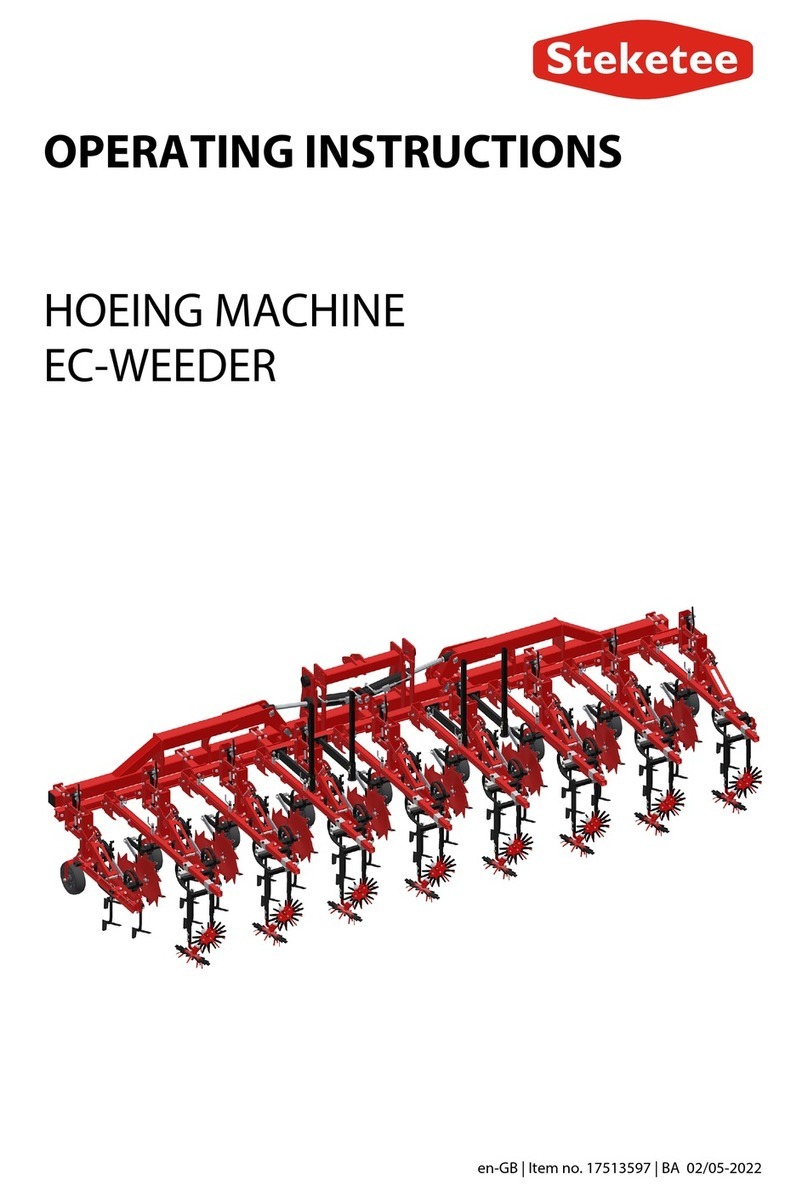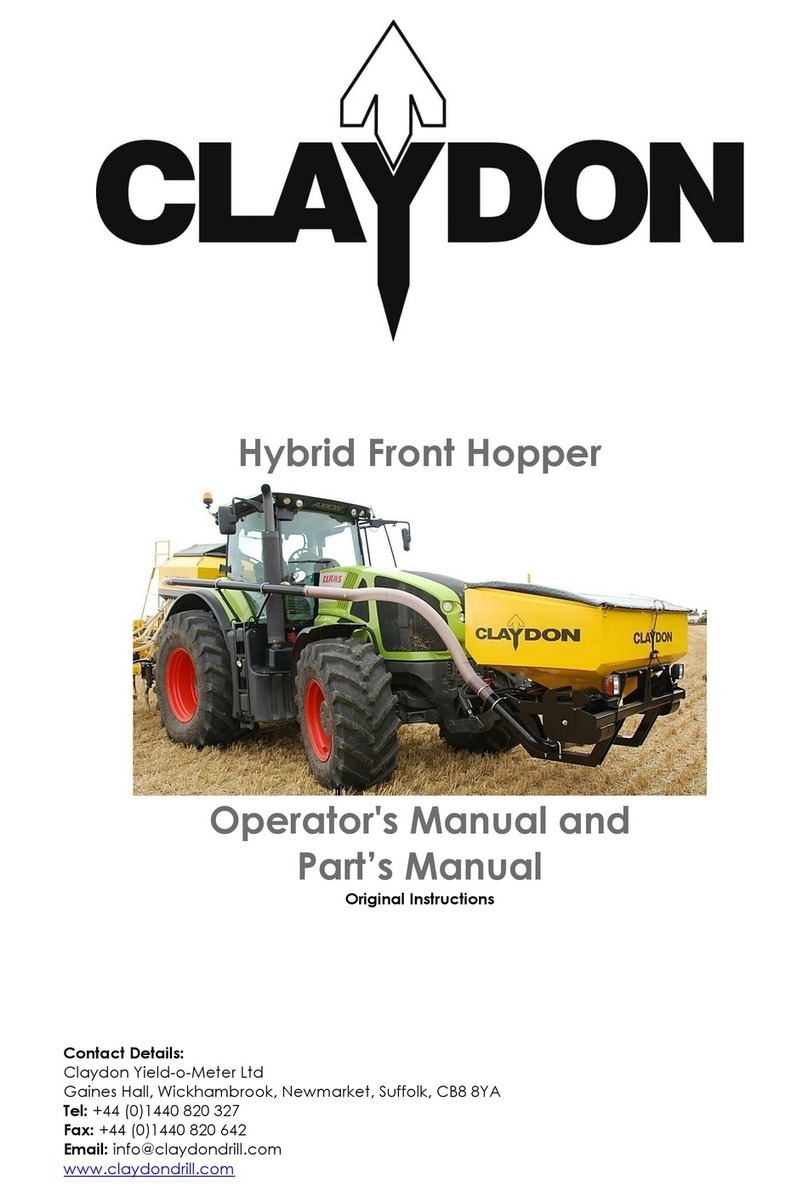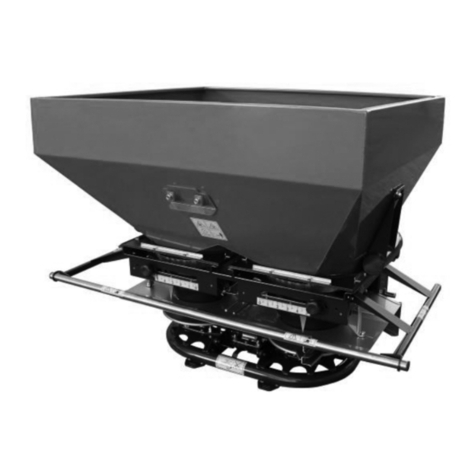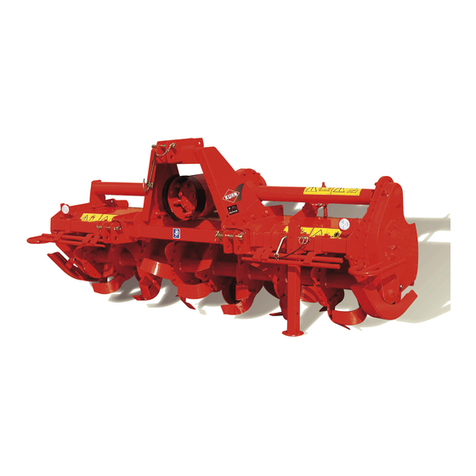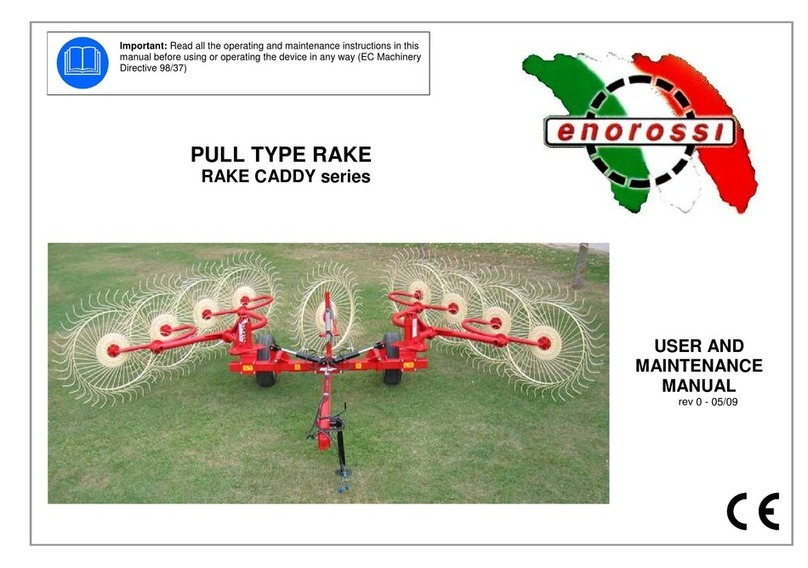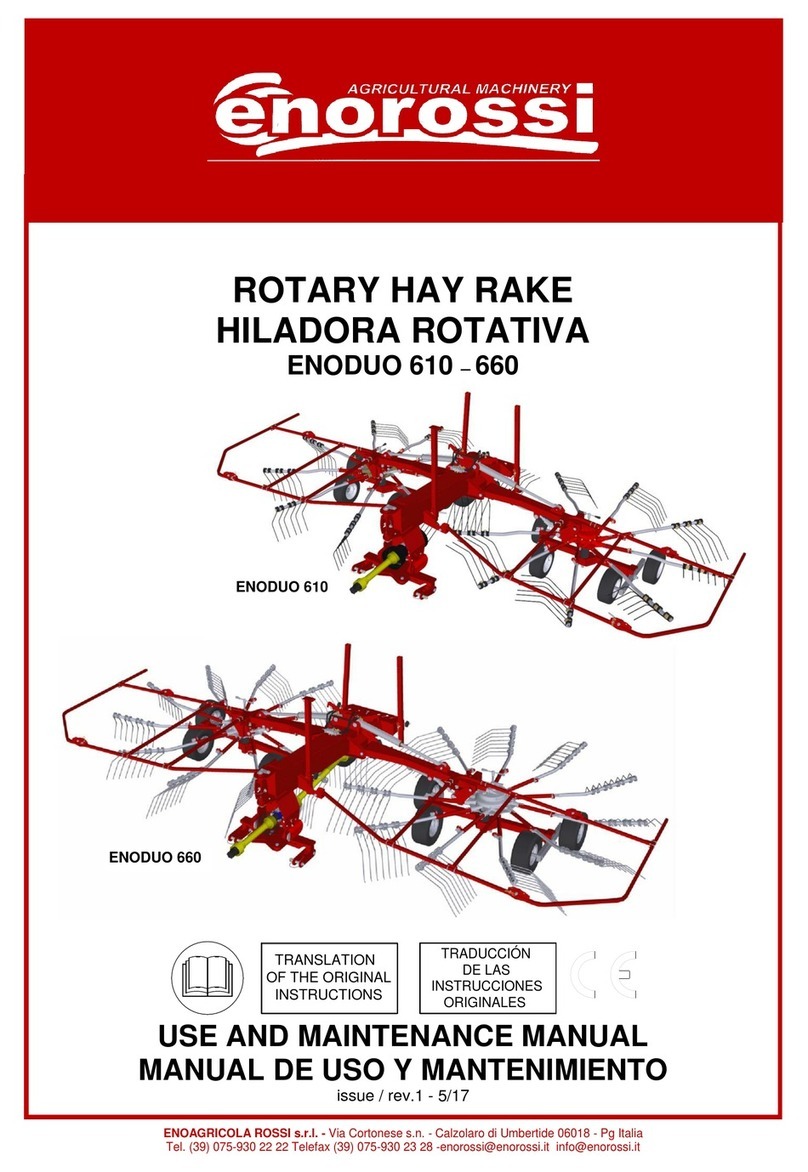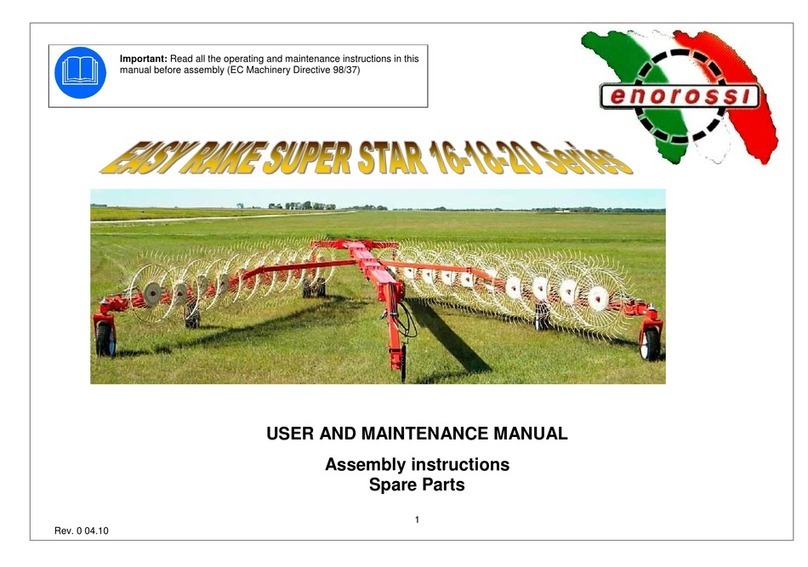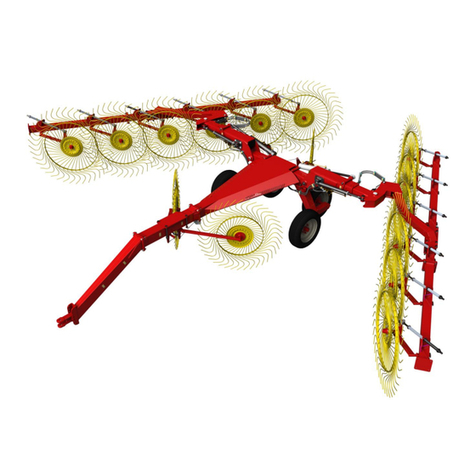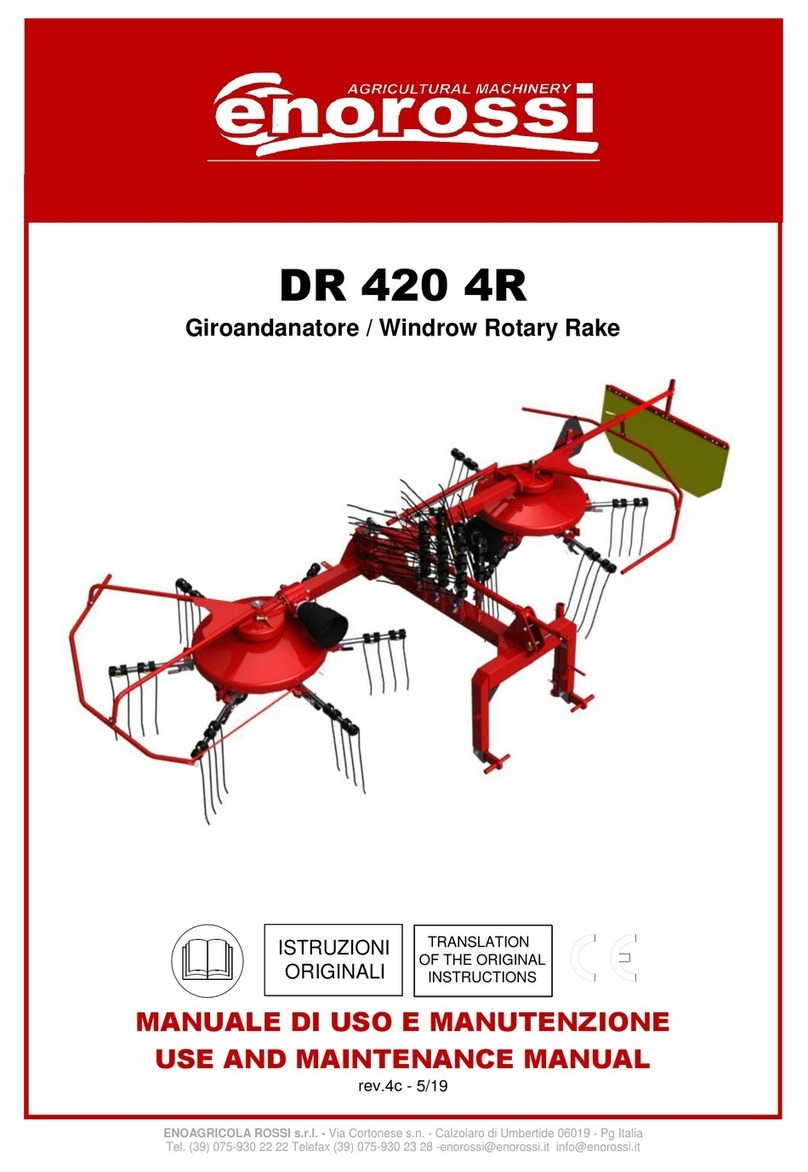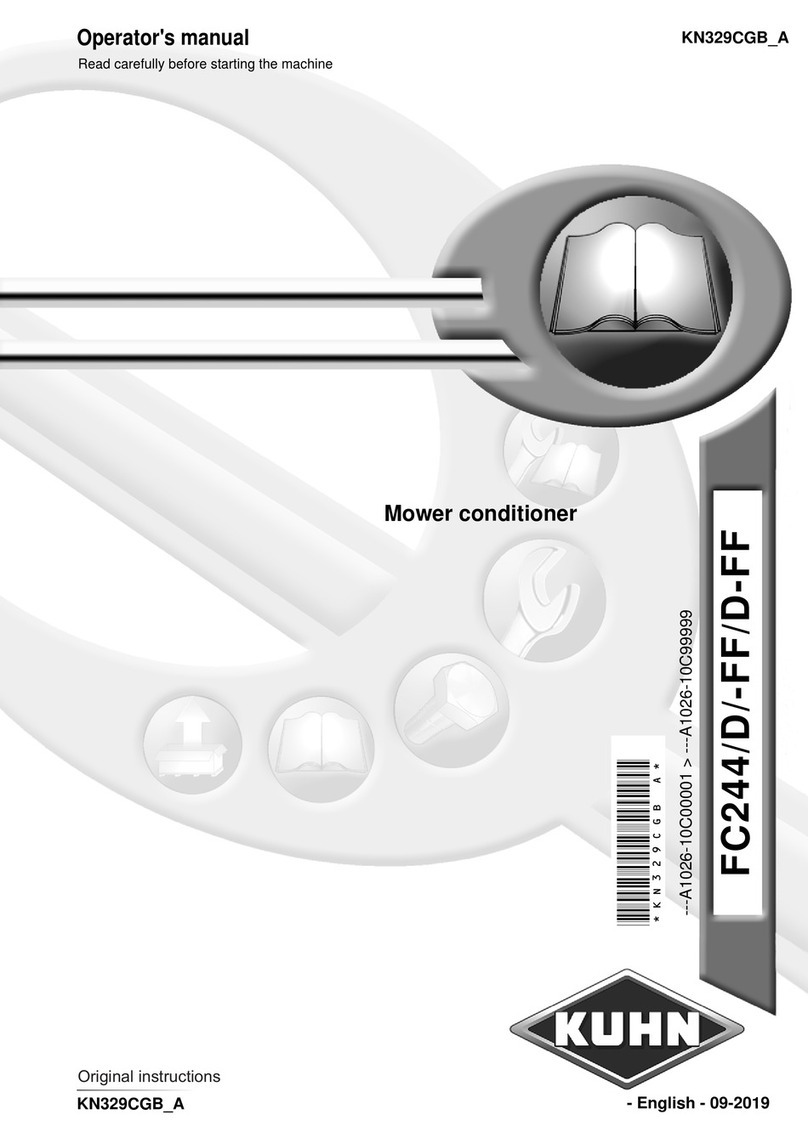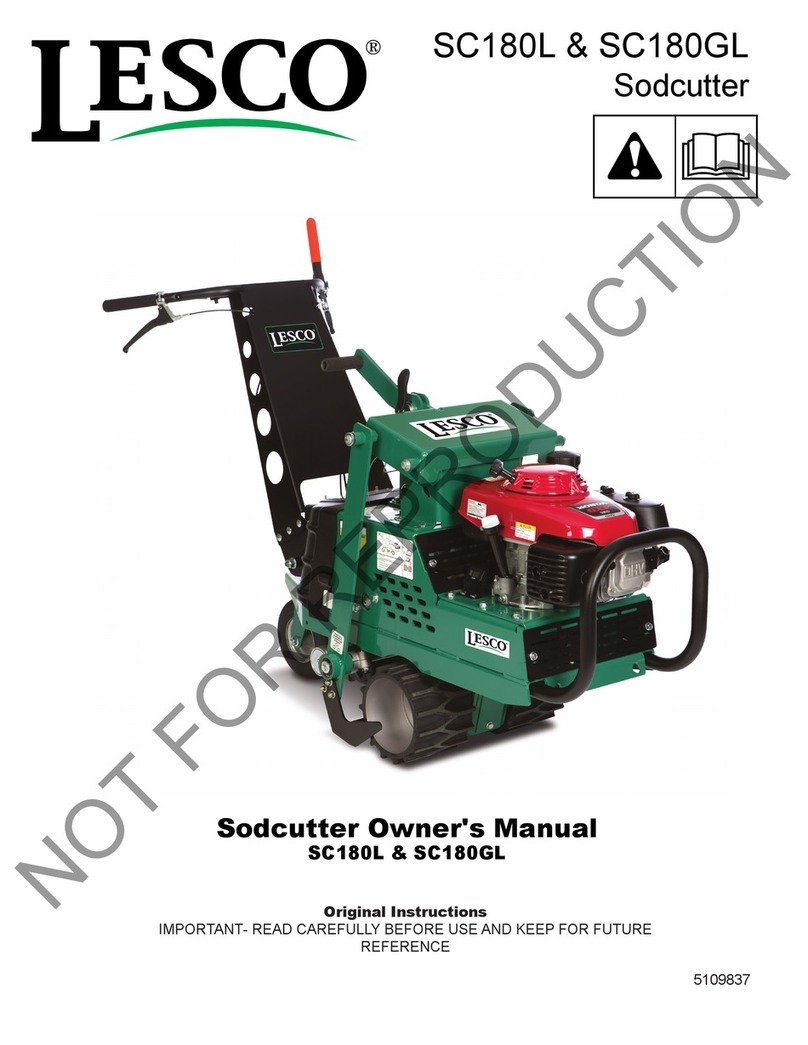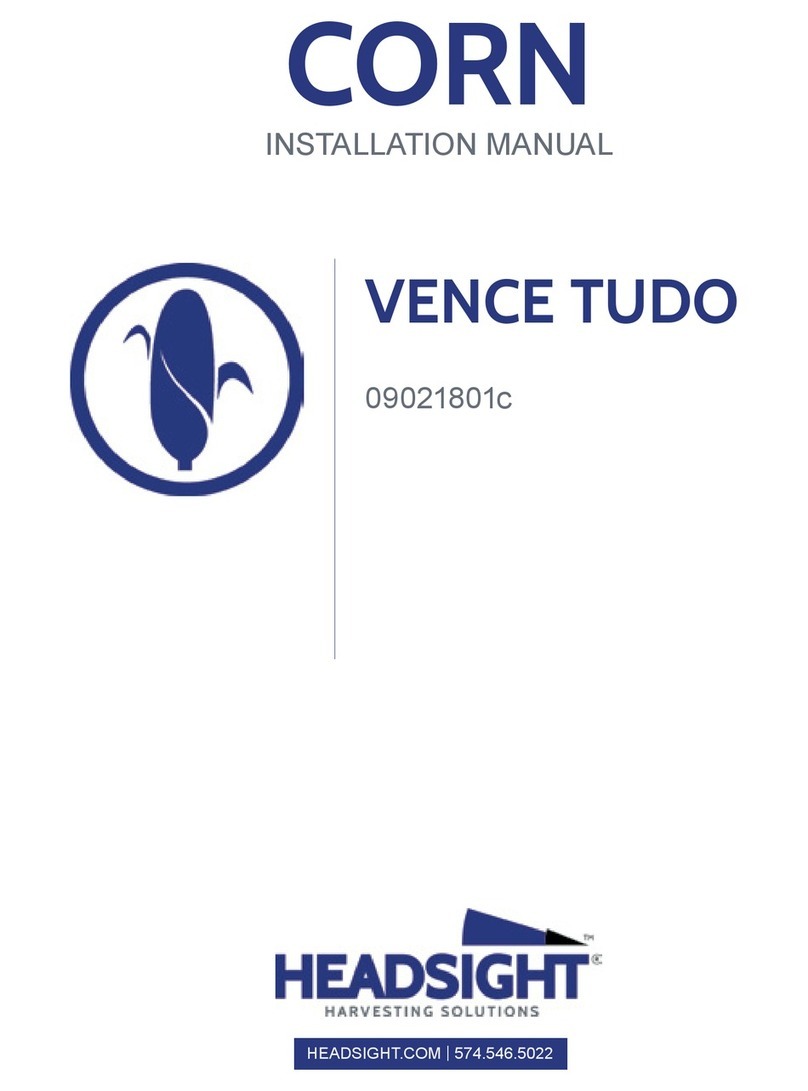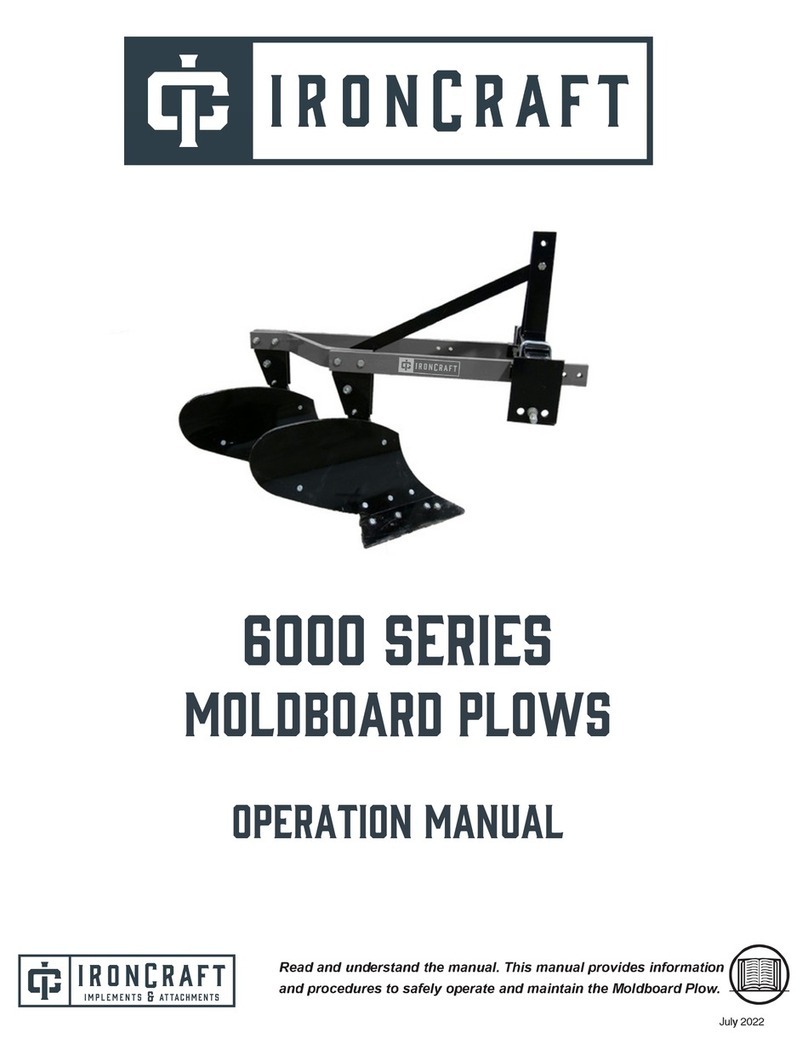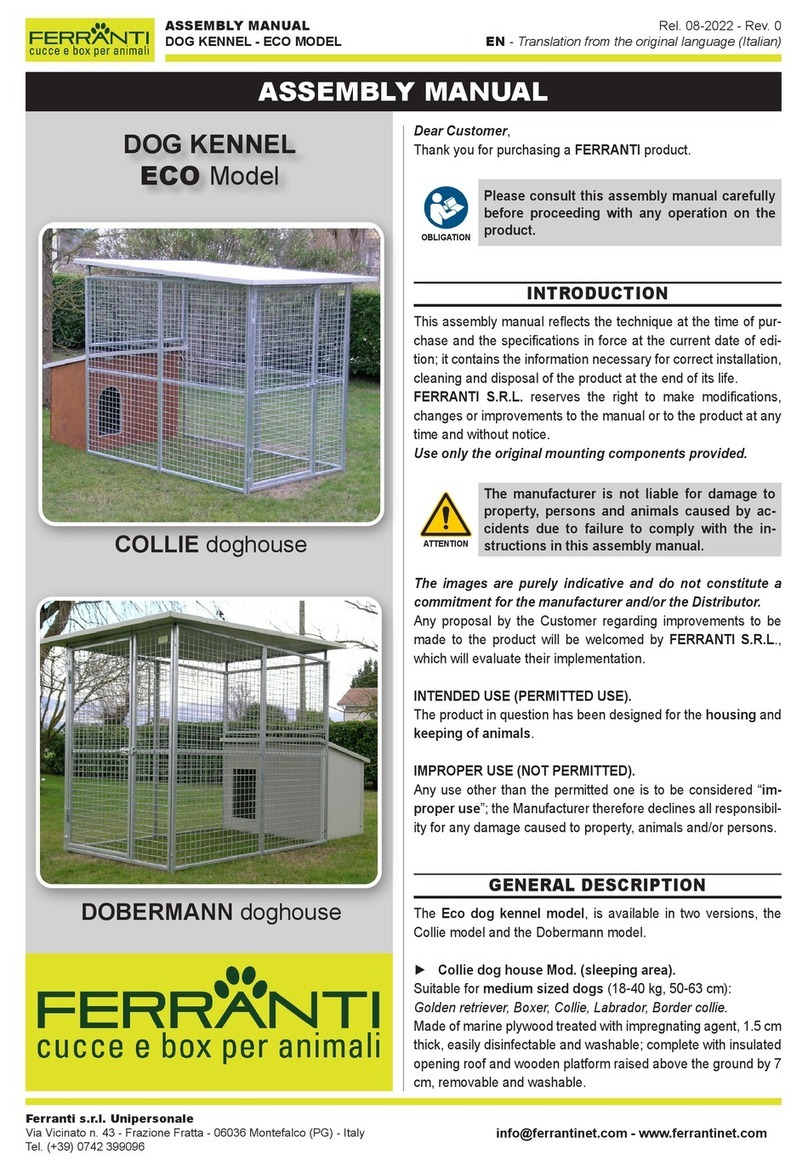
17
-il funzionamento del giroandanatore non produce
una rumorosità tale da consentire l’utilizzo di
protezioni acustiche (tappi, cuffie, ecc.), ma il
trattore, invece, potrebbe produrla. Consultare il
manuale di uso e manutenzione del trattore;
-le vibrazioni prodotte dall’attrezzatura e che
giungono all’operatore sul trattore sono di bassa
intensità ed hanno una frequenza tale da
risultare inferiore ai livelli sopportabili dal corpo
umano. Tuttavia, è bene mantenere gli organi
di trasmissione e gli ingranaggi sempre ben
lubrificati.
Interrompere immediatamente il lavoro se:
-si è in prossimità di oggetti resistenti, quali
tombini, pozzetti, alberi, ecc. in quanto il contatto
potrebbe provocare la rottura dei denti, i cui
pezzi potrebbero anche essere proiettati intorno
ad altissima velocità;
-si avvertono vibrazioni rumorose dell’attrezza-
tura. Per evitare possibili danni, sarà opportuno
fermare il trattore, disinserire la presa di forza,
arrestare il motore e se possibile individuare ed
eliminare l’inconveniente, osservando le norme
di sicurezza previste;
-sul modello trainato si verificano perdite di olio.
Non ricercare mai la perdita con le mani nude,
ma con l’ausilio di uno straccio e con guanti di
protezione. L’olio sotto pressione potrebbe
penetrare nella pelle causando gravi infezioni.
Uso scorretto ragionevolmente prevedibile e
limiti d’impiego
Un uso del giroandanatore diverso da quello descritto
nel paragrafo precedente è da considerarsi scorretto,
e quindi, vietato. Inoltre, le sue caratteristiche
tecniche non devono, in alcun modo, essere alterate
per modificarne le prestazioni. Se ciò si dovesse
verificare, sia la garanzia dell’attrezzatura che la
responsabilità del Fabbricante si annullerebbero
immediatamente.
Visibilità: in condizioni di scarsa visibilità (nebbia,
polvere, fumo od altro): si consiglia di fermare il
processo lavorativo ed aspettare finché nebbia,
polvere, fumo od altro si attenui. Comportarsi allo
stesso modo in caso di vento e/o di pioggia.
Zone pericolose: se, durante il processo lavorativo,
una persona o un animale entra in una delle zone
pericolose (vedi paragrafo precedente), l’operatore
deve immediatamente disinserire la presa di forza,
arrestare il trattore e provvedere ad allontanare
l’intruso. Tali zone restano pericolose anche durante
gli interventi di regolazione e/o di manutenzione e,
pertanto, persone non addette non devono sostare
né muoversi nelle vicinanze dell’attrezzatura.
-the functioning of the windrow rotary rake does
not produce a noise level that allows the use of
hearing protection (plugs, headphones, etc..),
however the tractor could produce it. Consult the
tractor’s use and maintenance manual;
-the vibrations that the equipment may produce
and transmit to the operator are of a low intensity
and the frequency is considered below human
tolerability levels. However, it is always good
to keep the transmission and the gears well
lubricated.
Immediately interrupt work operations when:
-you are in proximity of resistant objects, such as
manholes, wells, trees, etc. as contact could
break the tines, and project the pieces all around
at a very high speed;
-you hear noisy vibrations coming from the
equipment. To avoid possible damage, the
operator should stop the tractor, disengage the
PTO, switch off the engine and if possible,
identify and remedy the situation, always
respecting the safety regulations.
-There’s an oil leak on the pull-type version of the
windrow rotary rake. Never search for the leak
bear-handed, but use a piece of fabric or
protection gloves. Oil under pressure may
penetrate in the skin causing serious infections.
Reasonably forseeable improper use and limits of
employ
A different use of the windrow rotary rake from the
one described in the previous paragraph is
considered improper and therefore forbidden. In
addition, the technical characteristics of the
equipment must not be modified in any way to alter
its performance. In case this should happen
anyway, both the equipment warranty as the
Manufacturer’s liability will immediately become
void.
Visibility: in conditions of insufficient visibility (fog,
dust, smoke or other): it is advisable to stop the
tractor and to wait until that fog, dust or other
circumstance vanishes. Operate at the same way in
case of wind and/or rain.
Dangerous areas: if, during the working process, a
person or an animal goes in one of the dangerous
areas (see previous paragraph), the operator must
immediately disconnect the PTO, stop the tractor and
provide to put the intruder on a distance. Also during
the adjusting and/or maintenance tasks, these areas
remain dangerous and outsiders must not stay or
move in the proximity of the equipment.





















